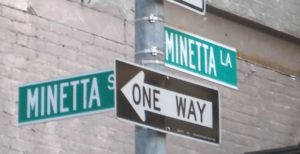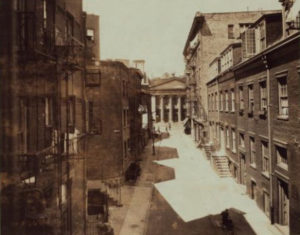When people talk about Black enclaves in New York, most people think of Harlem, not Minetta Street and Minetta Lane, two areas of current-day Manhattan’s Greenwich Village that were settled by freed Black men and women. At its height, the Minettas housed more than 14,000 former enslaved people and were referred to as “Little Africa.” Former New York City Mayor David Dinkins called the Minettas “our Ellis Island.” The Minettas are also close to another important Black historical site, the African Burial Ground National Monument.
The area, which was also known as the “Negro farms” and the “Negro causeway,” got its name from a stream called Manetta, which ran over the farms.
According to an article on Ozy.com, the former slave settlement was discovered in 1991 by construction workers who were excavating a government building. The slave settlement, which featured graves and the remains of freed men and women, went undiscovered for 200 years.
The Minettas grew because Black men and women were barred from burying their dead on the grounds of Trinity Church in lower Manhattan. This led them to find a burial ground to the north, which is uptown of current day City Hall.
Archaeologists say the remains of the buried Black people showed the transplants tried to hang onto African culture and dealt with the violence of the day.
Steven Butler, a senior writer with OZY.com, said, “Excavated were not just the remains of the men and women who helped to build and operate the early city of New York, but also telling remnants of religions and cultures transported to and preserved in the New World. Howard University historian Edna Greene Medford and Emilyn L. Brown, a community activist, described the remains of a woman, designated as Burial 340, whose ‘waist beads and hourglass-shaped, filed incisors that had adorned her in life remained to define her culturally more than two centuries after death.’ And then, in Burial 25, a young woman with her face shattered, wrist fractured, and rib cage penetrated by a still-present musket ball — provided evidence of the violence that pervaded colonial New York.”

The neighborhood had an awful reputation in the late 19th century. Crane said the Minettas were “until a few years ago two of the most enthusiastically murderous thoroughfares in the city.” The area was also known for its brothels, knifings and speakeasies. The Minettas were also frequented by Irish youth gangs and playwright Eugene O’Neill.
New York Times writer Jennifer Callahan said, “‘Black and tan’ saloons, bars that had a mixed-race clientele and were thereby apparently morally questionable, dotted the neighborhood by the late 19th century. Openly gay bars, like the nearby Slide on Bleecker and the Golden Rule Pleasure Club on West Third, were active in the 1890s.”
According to The New York Times, the W.P.A. “Guide to New York City” stated the last of the Black Americans moved out in the early part of the 19th century. According to the guide, “Considered in the latter part of the 19th century one of New York’s most notorious slums, it (the Minettas) has been improved through the renovation of some of its houses, which form an interesting group.”
Today the Minettas are dominated by bars and restaurants and its inhabitants are largely clueless about its historical significance. According to OZY.com, a townhouse in the area recently sold for $5.7 million.



